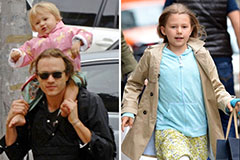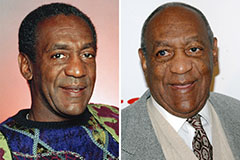Portrait painting is a fascinating art form that seeks to represent the very essence of a individual. Masterful artists utilize a range of techniques to illustrate not only the physical attributes but also the inner personality of their sitters. Via careful observation and a deep understanding into human emotions, portrait painters produce works of art that are both realistic and poignant.
A true portrait is more than just a resemblance; it's a glimpse into the mind of the person being depicted. Celebrated portrait painters across history have deposited behind a treasure trove of masterpieces that continue to captivate viewers today.
Brushstrokes and Emotion: Unveiling the Soul Through Paint
A painting is more than just a visual depiction; it holds a world of emotions waiting to be uncovered. Each stroke of the brush reveals a fragment of the artist's soul, weaving together vibrant hues to form an emotional story.
The intensity of a line can express anger, while the smoothness of a curve might whisper at peace. Color, too, plays a powerful role, evoking a spectrum of emotions from happiness to grief.
By observing these components, we can begin on a quest to interpret the artist's desires and, in consequently, gain a deeper appreciation of the human existence.
Beyond the Canvas
A journey into portraiture travels far beyond a simple depiction of an individual's physical click here appearance. It attempts to capture the spirit of a subject, unveiling their inner thoughts. Portraiture transforms a powerful medium for painters to examine the human nature.
From the stroke of a brush or the click of a camera, portraiture allows us to connect with individuals on a significant level.
Peering into the Soul: Portraits as Windows to History
Portraits hold the essence of humanity across time. From early civilizations to the modern era, artists devised their talents to immortalize the human experience in paint, sculpture, and photograph. Each surface becomes a glimpse into the lives, thoughts, and emotions of those who stand.
- Examining these portraits exposes not only individual stories but also societal values and cultural shifts. They act as a lasting record of human feeling, allowing us to relate with the past and gain a deeper appreciation of our shared history.
A Glimpse Through Paint: Power and Presence in Portraiture
Portraiture has long held the position of a fascinating arena/domain/stage where power and presence are inextricably linked. From the regal countenances/visages/features of monarchs to the unassuming/modest/simple expressions of everyday individuals/persons/folk, each painted gaze offers/presents/reveals a unique window into the dynamics/nuances/complexities of society/human interaction/the human condition.
The artist's/painter's/creator's skill in capturing not only the physical likeness but also the essence/spirit/character of their subject is what truly elevates/transforms/enhances a portrait from a mere depiction/representation/illustration to a powerful statement/reflection/work of art.
Through careful use of composition, light, and color, artists have employed the painted gaze to convey/communicate/express a range of emotions, happiness to grief, and to underscore/highlight/emphasize the status/position/rank of their subjects within society/their world/the hierarchy. A portrait can be a tool for propaganda, reflecting the values/beliefs/ideals of the era in which it was created.
From Realism to Impressionism: The Evolution of Portrait Painting
Portrait painting underwent a remarkable transformation from the strictures of Realism to the free-flowing aesthetics of Impressionism. Realist artists, such as Gustave Courbet and Jean-Auguste-Dominique Ingres, sought to capture the world authentically, focusing on minute details and a true-to-nature depiction of their subjects. Their portraits often conveyed a sense of seriousness.
In contrast, Impressionist painters like Edgar Degas and Pierre-Auguste Renoir embraced a more individualistic approach. They were less concerned with capturing precise details and moreover sought to capture the fleeting effects of light and color. Their portraits are marked with loose brushstrokes, vibrant hues, and a sense of movement. The shift from Realism to Impressionism reflected a broader cultural change, celebrating new ideas about perception and the role of the artist.
 Taran Noah Smith Then & Now!
Taran Noah Smith Then & Now! Matilda Ledger Then & Now!
Matilda Ledger Then & Now! Jane Carrey Then & Now!
Jane Carrey Then & Now! Bill Cosby Then & Now!
Bill Cosby Then & Now! Robin McGraw Then & Now!
Robin McGraw Then & Now!